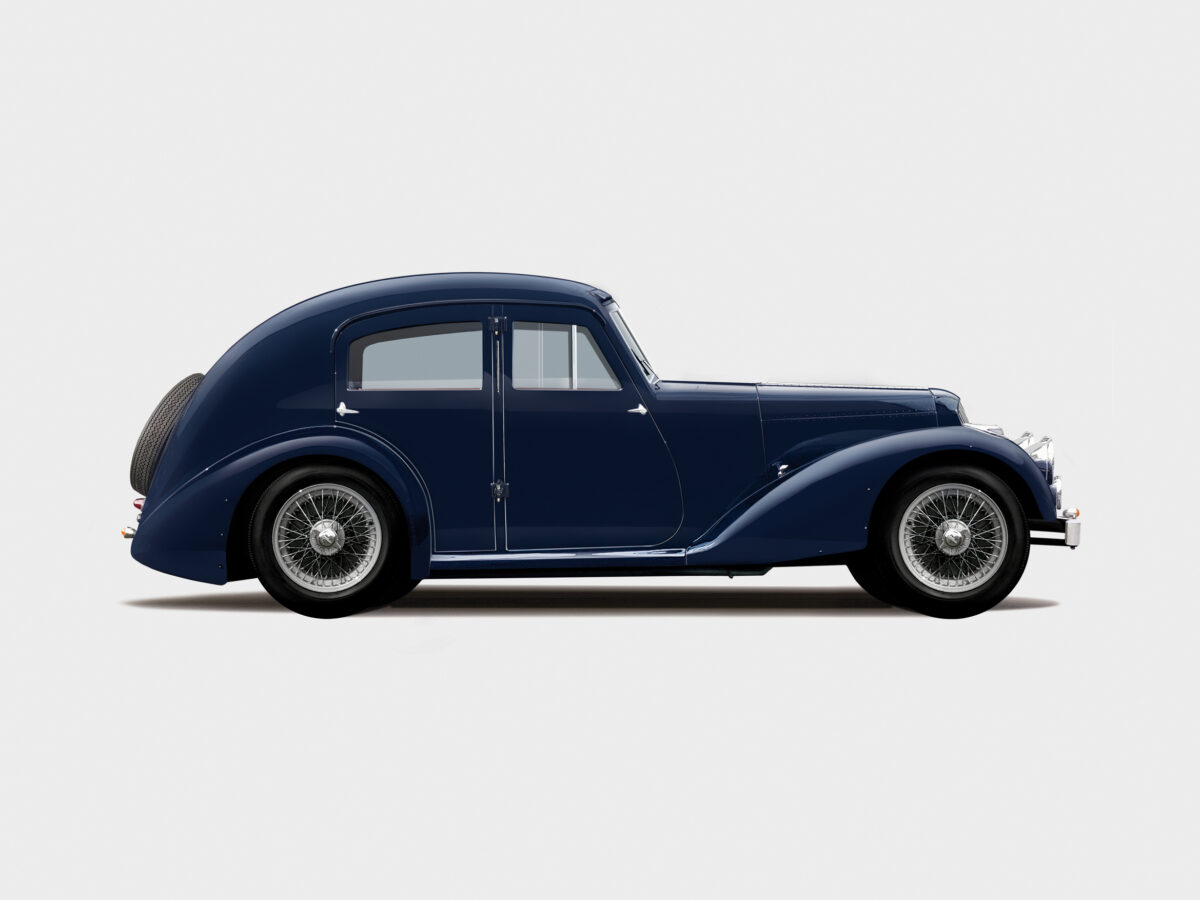Aston Martin – 2 Litre (1936)
Details
- Vehicle Type:
- 4 Door Saloon
- Coach Builder:
- Aston Martin
- Cylinders:
- Inline 4
- Engine CC:
- 1950
- Entrant
- Norbert Hieber (DE)
Class B
SHAPED BY THE WIND: THE EVOLUTION OF AERODYNAMICS
Following on from the successful racing cars with a displacement of 1½ litres, Aston Martin developed a 2 litre engined saloon car for 1936. This marked a new departure from Aston Martin’s traditional sports-car line-up since the saloon was intended as an everyday road car. The engine was not quite as technically sophisticated as the 1.5 litre cars, but the four-cylinder power unit still came with an overhead camshaft. When the prototype made its debut at London’s Olympia Show in 1936, it was initially heralded with great enthusiasm. However, the unorthodox design led to the car’s being given the less than flattering soubriquet of ‘Donald Duck’. The prototype was designed by long-term employee at Aston Martin, Claude Hill, who had originally joined the company in 1924. Hill came up with a number of interesting technical innovations that were not immediately obvious. This was the first Aston Martin to have a tubular steel frame and it also featured a centrally positioned fuel tank to yield a surprisingly spacious boot for the time. The vehicle could be jacked up using a manual hand pump system operated from inside the car. Initially, the car was anything but ready for production, and EML 132 – named after its registration number – was gradually improved and developed over the next two years. Ultimately, Aston Martin boss Gordon Sutherland was eminently satisfied with the changes and he declared that ‘Donald Duck’ had shown the marque “where the future lies”. Automotive magazine ‘Autocar’ agreed in 1940 and commented favourably on reliability and steering. However, EML 132 was sold around 1942 and all trace was lost by the early 1960s. At the tail-end of the 1980s, a German antiques dealer discovered the lost Aston Martin in a lucky barn find. After a comprehensive restoration over a period of 25 years, the car will be displayed here for the first time.
